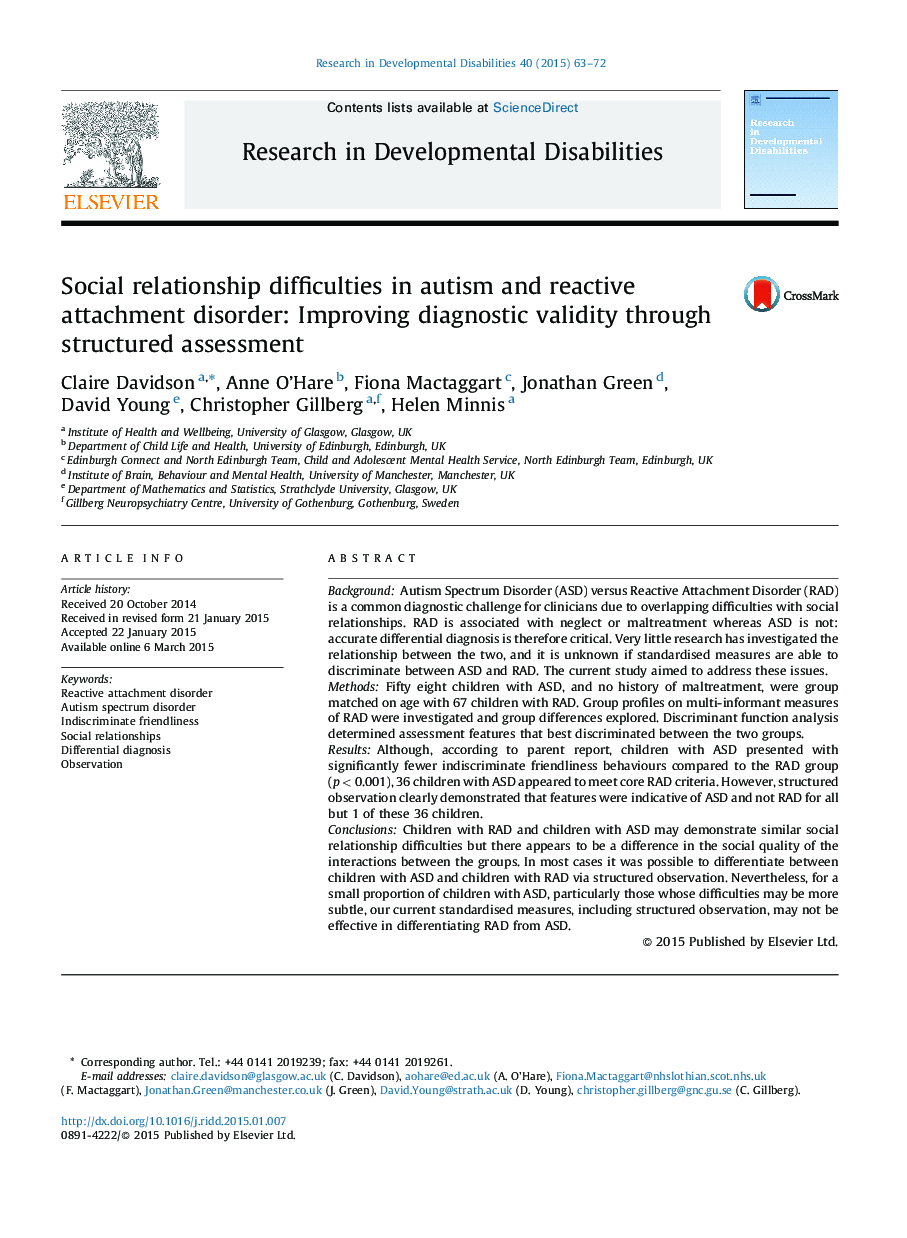| کد مقاله | کد نشریه | سال انتشار | مقاله انگلیسی | نسخه تمام متن |
|---|---|---|---|---|
| 371201 | 621902 | 2015 | 10 صفحه PDF | دانلود رایگان |
• Children with ASD and children with RAD may appear to present with similar social relationship difficulties.
• Accurate diagnosis is of the essence; ASD is a heritable neurodevelopmental disorder whereas RAD is caused by maltreatment.
• The ASD group had significantly less indiscriminate friendliness symptoms than the RAD group, on parent report.
• There was a difference in the quality of the social interaction difficulties between groups.
• Structured observation was the best discriminatory tool; some misclassifications highlight need to develop tools further.
BackgroundAutism Spectrum Disorder (ASD) versus Reactive Attachment Disorder (RAD) is a common diagnostic challenge for clinicians due to overlapping difficulties with social relationships. RAD is associated with neglect or maltreatment whereas ASD is not: accurate differential diagnosis is therefore critical. Very little research has investigated the relationship between the two, and it is unknown if standardised measures are able to discriminate between ASD and RAD. The current study aimed to address these issues.MethodsFifty eight children with ASD, and no history of maltreatment, were group matched on age with 67 children with RAD. Group profiles on multi-informant measures of RAD were investigated and group differences explored. Discriminant function analysis determined assessment features that best discriminated between the two groups.ResultsAlthough, according to parent report, children with ASD presented with significantly fewer indiscriminate friendliness behaviours compared to the RAD group (p < 0.001), 36 children with ASD appeared to meet core RAD criteria. However, structured observation clearly demonstrated that features were indicative of ASD and not RAD for all but 1 of these 36 children.ConclusionsChildren with RAD and children with ASD may demonstrate similar social relationship difficulties but there appears to be a difference in the social quality of the interactions between the groups. In most cases it was possible to differentiate between children with ASD and children with RAD via structured observation. Nevertheless, for a small proportion of children with ASD, particularly those whose difficulties may be more subtle, our current standardised measures, including structured observation, may not be effective in differentiating RAD from ASD.
Journal: Research in Developmental Disabilities - Volume 40, May 2015, Pages 63–72
